17 Perennial Vegetables to Plant Once for Years of Bounty

Perennial vegetables give you a bounty of tasty and nutritious edible plants year after year. The beauty of growing perennial food plants in your garden is that you don’t need to plant them annually. You have less work to do in the springtime because you have no seeding, planting, or preparation to grow your perennial vegetables. So, once you plant perennial crops, you can enjoy their benefits for many years.
We tend to think of vegetables as annuals, while most types of fruits are perennials. However, there is much diversity in the plant kingdom, and many types of vegetables grow recurrently year on year. Some popular vegetables that grow as perennials include globe artichoke, garlic, asparagus, types of onions, and sorrel. You can harvest these vegetables every year and then let them grow the following year again.
In this article, you’ll learn about the best perennial vegetables to grow if you want to harvest them annually. Before we list the top perennial edible plants, let’s find out a bit more about these delicious vegetables.
Perennial Vegetables—What Are They?
Perennial crops are plants that grow year after year without the need for replanting. The plants grow strong roots, and they go into dormancy in the winter. Unlike annual vegetables that need replanting in spring, perennial vegetables start growing again from the existing roots.
Biennial vegetables are plants that only grow for two years before dying off. For example, carrots are a type of biennial edible root plant. However, even these vegetables are grown as annuals because the roots are generally harvested every year.
Why Plant Perennial Vegetables?
Let’s look at four reasons why planting edible perennial plants in your garden makes sense.
1. Perennial Edible Plants are Easy to Care For
One of the most significant benefits of growing perennial vegetables is that they are low-maintenance crops. Once you plant the vegetables, they will grow every year with very little work.
After perennial vegetables get established, they are more resistant to drought and unfavorable weather conditions. All you need to do is avoid harvesting the root so that they grow back year after year.
2. Perennial Crops Improve the Soil
Growing perennial vegetables also improves soil health and helps your garden become more vibrant. Perennials develop deep roots that draw up essential minerals that promote healthy soil. Also, the ground where perennials grow tends to be more fertile than where annual vegetables grow due to the organic matter of the plants that lose their leaves.
Another reason why perennial crops boost soil health is due to less disturbance. To grow annuals, you need to prepare the soil by tilling. This preparation work can disturb the soil integrity causing fewer beneficial grubs, fungi, and bacteria to flourish. Perennial vegetables also balance nitrogen levels in the soil which helps surrounding plants grow better.
3. Growing Perennial Vegetables Increases Harvest
Because edible perennials continue growing throughout the year, they are ripe for harvesting at different times. So, while you’re busy working hard to prepare a vegetable patch for annual plants, some perennial crops may be ready to harvest.
4. Perennial vegetables beautify yards
Apart from providing you with a yearly bountiful crop, perennial greens add beauty to garden landscapes. Edible perennials produce attractive flowers that attract pollinators—bees and butterflies—when other plants aren’t flowering.
Perennials that Grow as Annuals

Potato is a perennial vegetable that is grown as an annual
Many perennial vegetables are commonly grown as annuals. For example, tomatoes (which are botanically fruits but used as vegetables in the culinary world) are a type of perennial plant. The reason tomatoes are grown as annuals is because the tropical nightshade plants can’t survive cold winters.
Potatoes are another example of a perennial vegetable that’s grown as an annual. Due to pests and diseases, potatoes should be rotated every other year to encourage healthy growth. Other leafy perennial plants such as kale get leggy and need replanting.
The Drawback of Planting Perennial Vegetables
Although growing edible perennial crops in a vegetable patch is less maintenance, they’re not for everyone. Perennial vegetables tend to take a long time to establish themselves. So, you need a long-term gardening plan.
What are some of the other disadvantages of growing perennial vegetables? Here are a few:
- Similar to annual vegetables, perennials taste better early in the season before they flower.
- You can’t use crop rotation to keep perennial greens free from pests and disease.
The Best Perennial Vegetables for Your Garden (With Pictures)
All of the vegetables on this list grow as perennials. However, it’s good to remember that, depending on your climate, some plants may only grow as annuals.
Asparagus (Asparagus officinalis)

Asparagus is the most well-known perennial vegetable. Once established in a vegetable patch, asparagus gives delicious edible stems year after year. Asparagus needs full sun and moist, well-draining soil to grow as a perennial. However, it has to grow for two to three years before you can start to enjoy its tasty shoots.
Another benefit of asparagus is that it blooms with dainty flowers in summer. These flowers attract many bees to your garden. Asparagus is hardy to zone 3.
Asparagus is one of the best plants for your spring garden.
Garlic (Allium sativum)

You might be surprised to find garlic on the list of perennial vegetables. Most people grow garlic as an annual by planting it in the fall and then harvesting the bulbs in the following summer. However, if you leave some garlic bulbs in the ground, they will die back before regrowing later in the year.
Perennial garlic forms dense clumps as it grows from year to year. You will need to divide the roots to help the allium vegetable thrive. However, if you leave garlic to grow as a perennial, you will probably never have to buy fresh garlic from the store again.
Garlic is a hardy perennial vegetable to USDA zone 2.
Horseradish (Armoracia rusticana)
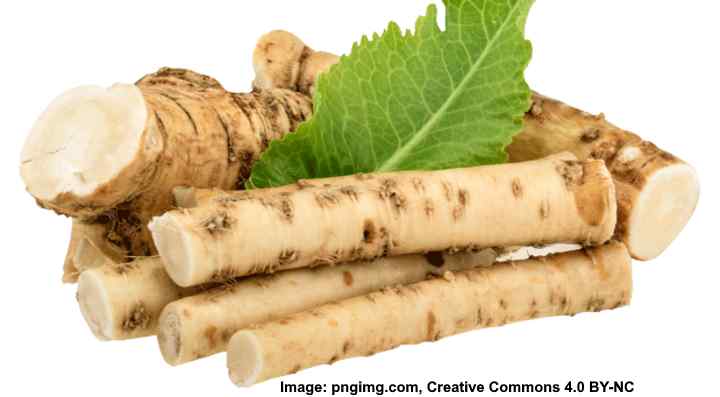
Another root vegetable that grows as a perennial is horseradish. This spicy, peppery vegetable is related to broccoli, cabbage, and mustard. This long thick white perennial root is grated and used to spice up the flavor of many foods. For horseradish to grow as a perennial vegetable, you have to dig up the root and then replant the offshoot.
Horseradish is extremely easy to grow in your vegetable garden. You can even just buy a fresh root from the store and plant it in the ground. Above the ground, the vegetable sprouts large green leaves and clusters of attractive flowers.
This spicy perennial vegetable is hardy in zones 2 to 9.
Globe artichokes (Cynara scolymus)

Globe artichokes grow as perennial vegetables if you protect them during the winter. The long stems can grow to about 5 ft. (1.5 m) in the garden. The edible part of the vegetable is the large globous flower bud. Most of the outer layer is removed to reveal the artichoke “heart,” which is then boiled, steamed, or fried. Or, the whole head can be steamed, and the individual leaves are used to dip in olive oil or hummus.
If left to grow in the garden, the bulb turns into fuzzy purple flowers. The perennial is hardy in zones 7 and above.
Jerusalem Artichokes (Helianthus tuberosus)

Although called an artichoke, Jerusalem artichoke is a member of the family Asteraceae—making it a relative of the sunflower. These perennial herbaceous plants grow long stems with large yellow flowers. The tuberous roots are the edible part of this perennial food.
Also called sunroot tubers or sunchokes, these vegetables grow and spread vigorously in the ground. The roots look like small potatoes, and you cook and eat them in the same way.
Jerusalem artichokes are hardy perennials to zone 2.
Sorrel (Rumex acetosa)
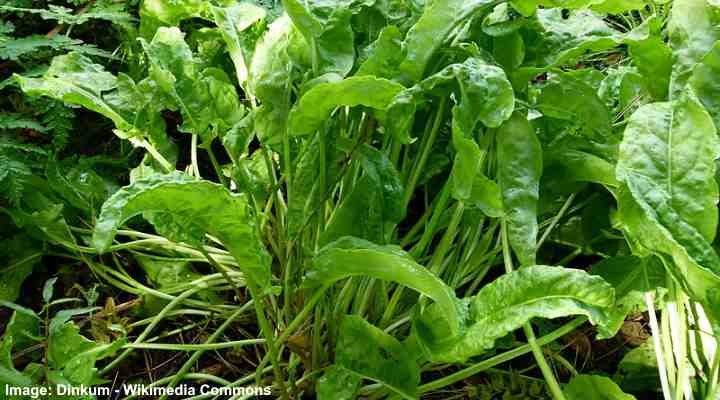
Sorrel is a leafy perennial green with a citrusy, tangy taste when cooked. Sorrel leaves grow to about 24” (60 cm) high, and when eaten raw, have a sour taste. The leafy greens go well in salads, soups, sauces, and stews. Sorrel is a popular green leafy vegetable in many countries. Because sorrel grows extensively in the wild, this is a popular perennial green to forage.
If you cultivate sorrel in a vegetable garden for consuming, plant in sunny location with some partial shade. The leaves taste better when eaten in the spring. The green leafy vegetable is hardy in zones 5 and higher
Broccoli (Perennial Nine-Star Broccoli)

Some types of broccoli grow as perennials, whereas others grow better as annuals. Broccoli is a member of the family Brassicaceae, making it a relative of the cabbage.
Generally, broccoli is a cold-weather annual vegetable. However, the cultivars ‘Nine-Star’ and ‘Purple Cape’ are great perennials. These are sprouting varieties of broccoli with elongated lobed leaves and broccoli sprouts. To keep your broccoli growing year after year, cut off the flowering stems before they go to seed.
Onions (Allium cepa)

Some onion species grow as perennial edible plants where you can harvest their tubular green shoots. These onion shoots are similar to scallions (spring onions). You can eat these perennial greens fresh in salads or fry them in stir-fries. Another way to use perennial onions in cooking is to harvest some of the small bulbs. In spring, these look like pearl onions. If left to die off during summer, you will get small shallot-type onions in early fall.
Grow onions in full sun where they will thrive in zones 4 to 8.
Chives (Allium schoenoprasum)
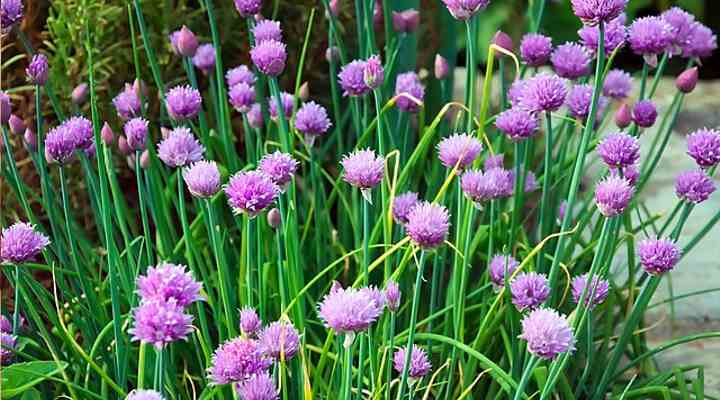
From the Latin name, you tell that chives are related to onions and garlic. These greens are also perennials that you can eat fresh in salads or sandwiches. These tasty perennial herbs grow in clumps with slender green grass-like leaves that grow from bulbs. To enjoy these greens, just snip a few leaves off and chop to use in salads.
These hardy perennial Alliums grow in zones 4 to 8.
Sweet Potato (Ipomoea batatas)

Sweet potatoes are another type of perennial vegetable that is usually grown as an annual. However, if you live in warm climates, you can leave this perennial tuber to grow in the ground year after year. Some gardeners use the vining stems and large leaves for ground cover. The trumpet-like pretty flowers also attract various pollinators to the garden. You can also harvest some of the sweet potato tubers to make a tasty meal.
Watercress (Nasturtium officinale)
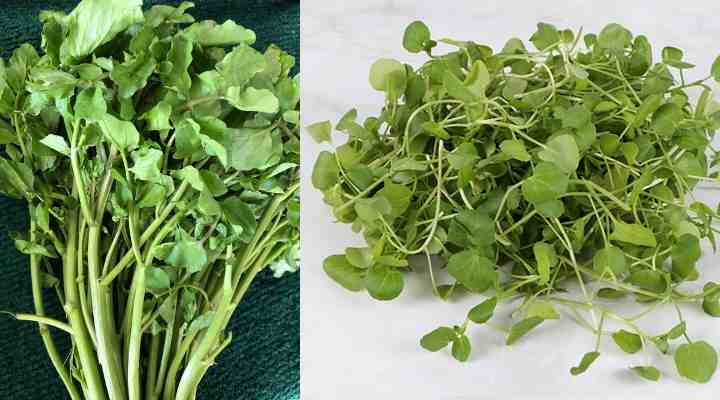
Watercress is an herbaceous perennial green that adds peppery spice to a salad. According to some sources, this hardy aquatic plant is the oldest leaf plant consumed by humans. Also a member of the family Brassicaceae, the thin stems and small green leaves have intense, sharp flavors.
All you need to grow watercress in your garden is damp soil. So, grow it beside a pond or in an area of your yards that has poor drainage.
Good King Henry (Chenopodium bonus-henricus)
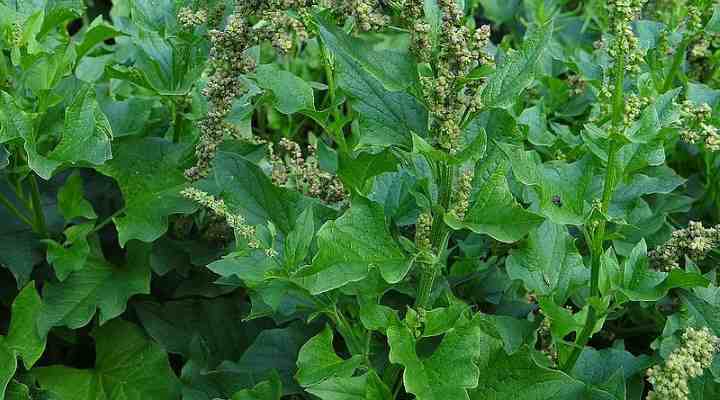
Good King Henry is a less known perennial vegetable that has tasty leaves and stems. Also called “poor man’s asparagus,” there is nothing inferior about the taste of this delicious vegetable. The edible plant grows up to 30” tall (80 cm) and is characterized by large, broad, diamond-shaped leaves and a slender stem that tapers to a spike. The delicious stems are harvested in spring and prepared and cooked similar to asparagus. The best time to pick the leaves is in fall and cook them like spinach.
Good King Henry is hardy in zone 3 and above.
Lovage (Levisticum officinale)
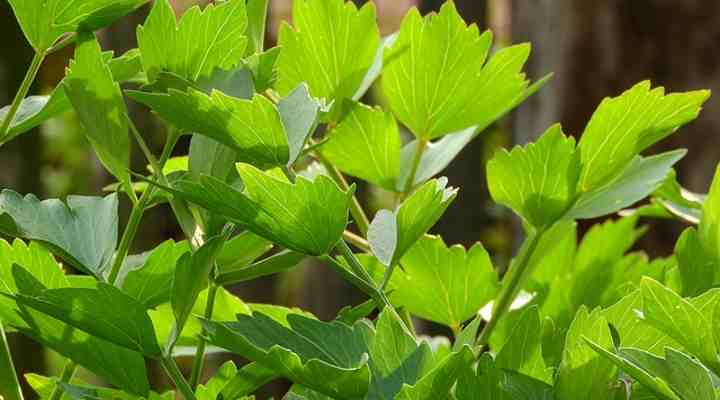
Lovage is considered an ancient herb that has fallen out of fashion in that past few decades. The perennial plant is similar to celery, only that it has a more robust flavor. All parts of the plant—leaves, stems, seeds, and roots—are edible. This plant can grow in most locations of your garden without a lot of fuss.
The stems of this herbaceous plant grow up to 8 ft. (2.5 m) tall. So, if you want to grow it for eating in salads, soups, or stews, you don’t need to grow a lot of it.
Lovage is hardy to zone 4.
Sea Kale (Crambe maritima)
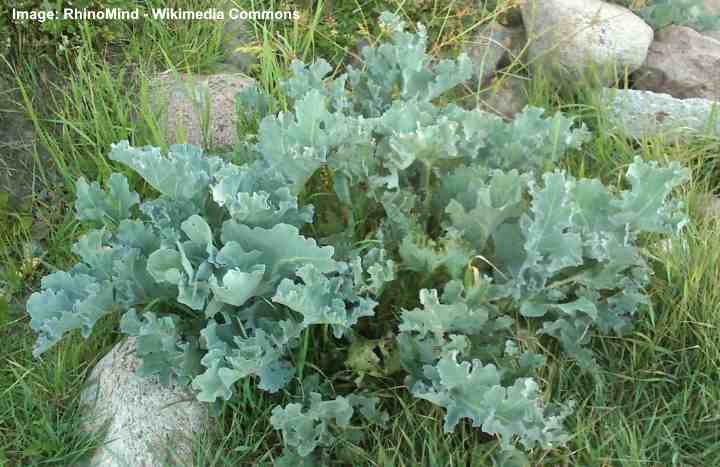
If you’re looking for a type of superfood to grow as a perennial edible plant, plant sea kale in your garden. This cruciferous vegetable grows recurrently every year into a leafy mound. The reason sea kale is hard to find is that it doesn’t travel well. So, if you want to enjoy this asparagus-like food, you will have to plant it in your yard. Prepare the shoots for cooking similar to asparagus and the leaves like regular kale.
Sea kale grows well in light, sandy soil, and in zones 4 and above.
Radicchio (Cichorium intybus)
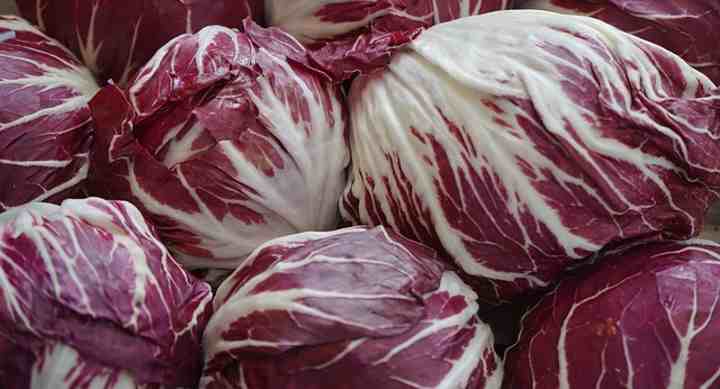
Radicchio is a type of chicory and looks like a small cabbage with burgundy leaves and pure white stems. It will come back every year in most climates. This leafy perennial vegetable has a spicy, bitter taste that becomes more pleasant when grilled. Roasted chicory is also a popular caffeine-free coffee substitute.
Radicchio is hardy to zones 4-8.
Rhubarb

Although rhubarb stems are prepared like a fruit in cakes and pies, it is actually a vegetable. Rhubarb can grow in gardens for years and gives a bountiful annual crop of tart red stems. Usually, it takes about three years for the edible stems to develop fully. After that, you can harvest the stalks and use them for baking rhubarb pie or other sweet dishes.
Grow rhubarb as a perennial edible plant in zones 3 and above.
Dandelions (Taraxacum)

Although most people think of dandelion as a weed, it’s a perennial herbaceous plant that is entirely edible. You can use the taproot, flowers, leaves, and stems as food. For example, you can blanch the leaves and use in fresh green salads or add them to a stir-fry or soup. You can also roast dandelion root and use it in recipes that call for root vegetables. Dandelion root is also dried and roasted to make dandelion tea—a caffeine-free drink similar to coffee.
It doesn’t matter how much you chop off the leaves and stems of this perennial edible plant, it keeps growing back. Its invasive nature is probably why many gardeners give it such a bad rap as a pesky weed.
Related articles:
